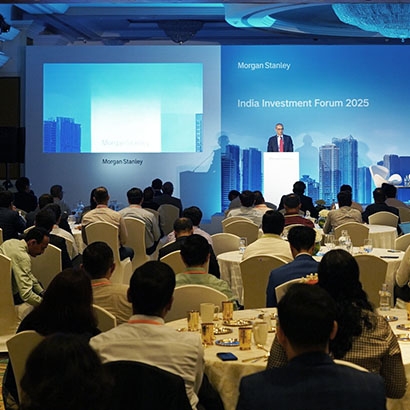With a young workforce and an improving economy, India’s real-estate market looks set for significant growth. Could it match China's development boom?
India's young work force, which is nearing home-buying age and stands to benefit from the country's economic expansion, is expected to significantly drive the real-estate market over the next 10 years.
The confluence of factors, including a projected sharp increase in the country's per capita income, further urbanization and a firmer federal hand on regulations, could push annual property market sales, which were $105 billion in 2015, to $462 billion by 2025, according to a recent Morgan Stanley Research report.
India’s property market sales are expected to grow at a 14% compound annual rate from 2016-20 and 18% from 2020-25.
Even more tantalizing are the similarities to the rapid housing and construction development of India's neighbor to the north, China. Indeed, China's property boom of the past 15 years may provide a glimpse into India's potential growth in the next decade, with a construction boom and increase in homeownership that has affected social and economic trends. The projected growth in real estate for India could offer similar opportunities in a variety of related industries such as cement, paint and housing finance.
The China Parallel
India's brightening economic future is critical to the country's projected property sector surge. “If India can maintain its political and social stability and sustain real gross domestic product growth of 6.5%-7.5% over the next few years, it should generate strong employment and income growth, both of which could drive property sector demand,” says Sameer Baisiwala, who covers India’s property industry for Morgan Stanley.
India’s property market sales are expected to grow at a 14% compound annual rate from 2016-20 and 18% from 2020-25, according to Morgan Stanley’s analysis. This is comparable to China’s 22% compound annual growth rate from 2004-15.
Other macroeconomic parallels abound. “To us, the macro construct of China in 2000-04 and India in 2015 appear quite comparable in terms of size of the economy, affordability, extent of urbanization, demographics, and growth prospects,” says Baisiwala. For instance, China notched $1.9 trillion in GDP in 2004, compared to India's $1.8 trillion GDP in 2015. The median age of China's population in 2000 was 29, compared to India’s median of 27 in 2015. In 2000, the percentage of China's urbanization rate, or population living in urban areas, was 36%, compared to India’s 33% in 2015.
Generational Jump
From 2004, China's property sales market grew significantly. the country's investment in infrastructure increased 16% annually from 2004-13, culminating in $425 billion in annual expenses. In 2015, China’s urbanization rate reached 56%, and GDP was $10.9 trillion, second only to the U.S.
“At the time of economic expansion, Chinese cities offered a mix of good infrastructure, coupled with cheap land and labor. This attracted investment and led to industrial development on a large scale,” says China property analyst John Lam. “The skylines of some of China's biggest cities were agricultural land less than a generation ago.”
There are some key differences between India and China. The Morgan Stanley forecast of 6.75% GDP growth for India during the next 10 years is lower than the 9.7% growth China achieved in the past 15 years. India's mortgage and inflation rates also are higher than China's were.
And while India has strengthened the federal government's role in its real-estate market, the Chinese government took an even larger role in the regulation of its property market. Additionally, India's dilapidated infrastructure can be a drag on economic development.
Investment Opportunity
While India's property industry will represent a significant opportunity if the growth projections prove true, it's not the only industry that will benefit. “We believe that strong growth in the property sector over the next few years should translate into demand for several adjacent industries, including housing finance companies and banks, construction, and consumer items, such as paint,” says Baisiwala. “We expect these to accelerate in volume terms over the next few years.”
Take the cement industry, for example. Demand for cement in India grew at around 4% annually in recent years, but a 9% compound annual growth rate in property volume could drive up demand for cement, with annual growth accelerating to 5.5%-6%, according to Morgan Stanley. Similarly, with mortgage volumes expected to rise, housing finance companies could draw more investment interest. Morgan Stanley estimates that India’s 9% mortgage-to-GDP ratio in 2016 could increase to around 17% in 2026.
Morgan Stanley Research has written a series of reports on "The Next India," the latest installment of which is "The Next India: Urban Dreams,” (Dec. 6, 2016). Contact your Morgan Stanley representative or Financial Advisor for the full report. Read previous stories in this series on coastal transport, railways, reform and growth and the Internet boom in India. Plus, more Ideas.



